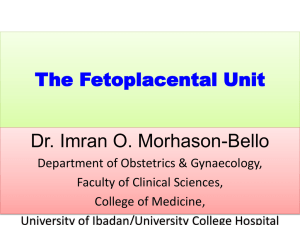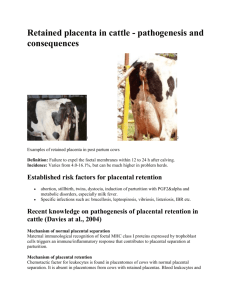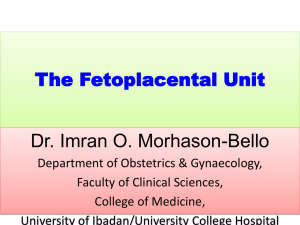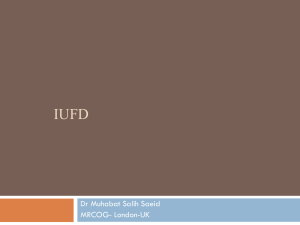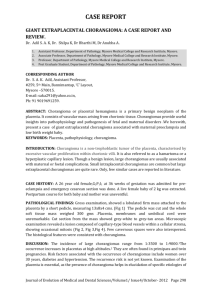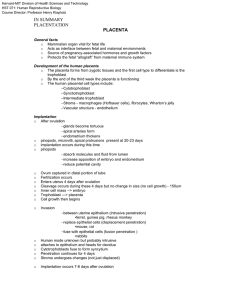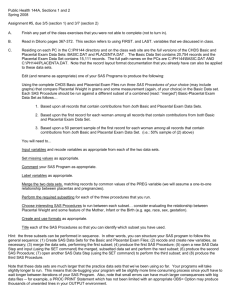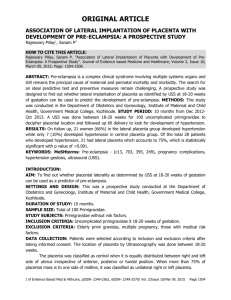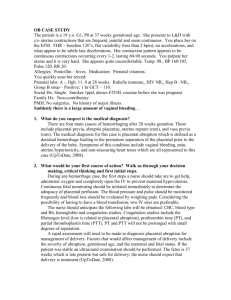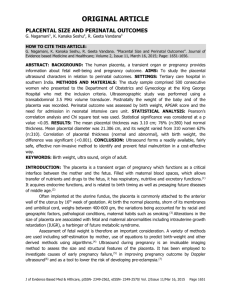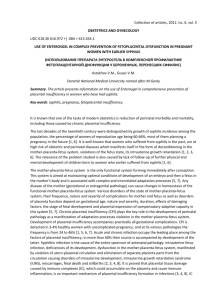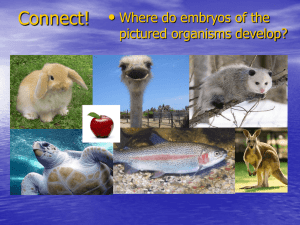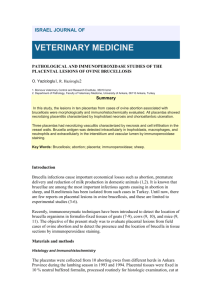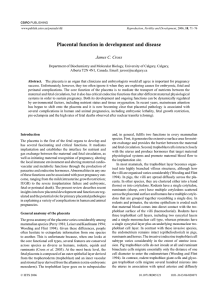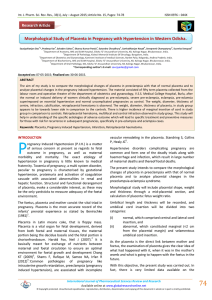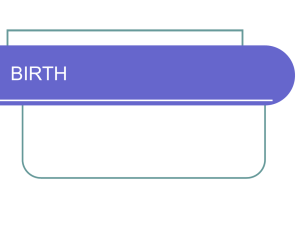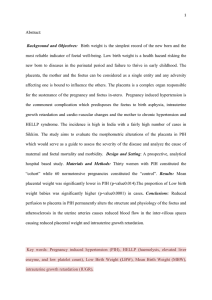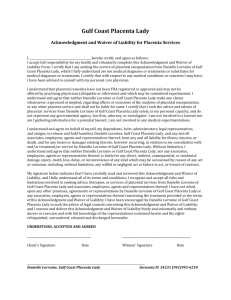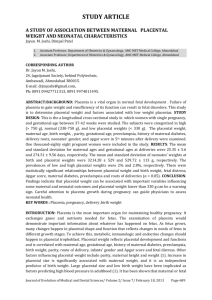Stillbirth-Summit-abstract-Parast
advertisement
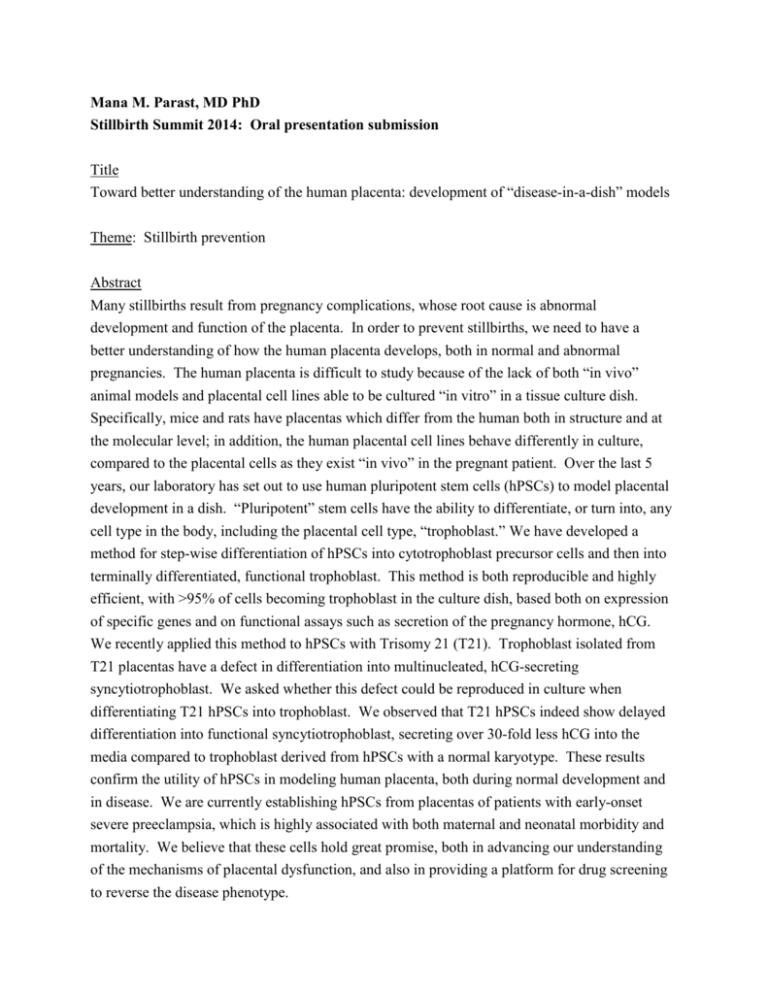
Mana M. Parast, MD PhD Stillbirth Summit 2014: Oral presentation submission Title Toward better understanding of the human placenta: development of “disease-in-a-dish” models Theme: Stillbirth prevention Abstract Many stillbirths result from pregnancy complications, whose root cause is abnormal development and function of the placenta. In order to prevent stillbirths, we need to have a better understanding of how the human placenta develops, both in normal and abnormal pregnancies. The human placenta is difficult to study because of the lack of both “in vivo” animal models and placental cell lines able to be cultured “in vitro” in a tissue culture dish. Specifically, mice and rats have placentas which differ from the human both in structure and at the molecular level; in addition, the human placental cell lines behave differently in culture, compared to the placental cells as they exist “in vivo” in the pregnant patient. Over the last 5 years, our laboratory has set out to use human pluripotent stem cells (hPSCs) to model placental development in a dish. “Pluripotent” stem cells have the ability to differentiate, or turn into, any cell type in the body, including the placental cell type, “trophoblast.” We have developed a method for step-wise differentiation of hPSCs into cytotrophoblast precursor cells and then into terminally differentiated, functional trophoblast. This method is both reproducible and highly efficient, with >95% of cells becoming trophoblast in the culture dish, based both on expression of specific genes and on functional assays such as secretion of the pregnancy hormone, hCG. We recently applied this method to hPSCs with Trisomy 21 (T21). Trophoblast isolated from T21 placentas have a defect in differentiation into multinucleated, hCG-secreting syncytiotrophoblast. We asked whether this defect could be reproduced in culture when differentiating T21 hPSCs into trophoblast. We observed that T21 hPSCs indeed show delayed differentiation into functional syncytiotrophoblast, secreting over 30-fold less hCG into the media compared to trophoblast derived from hPSCs with a normal karyotype. These results confirm the utility of hPSCs in modeling human placenta, both during normal development and in disease. We are currently establishing hPSCs from placentas of patients with early-onset severe preeclampsia, which is highly associated with both maternal and neonatal morbidity and mortality. We believe that these cells hold great promise, both in advancing our understanding of the mechanisms of placental dysfunction, and also in providing a platform for drug screening to reverse the disease phenotype. Paragraph for speaker introduction Dr. Parast received her Ph.D. in Cell Biology (2000) and her M.D. in Medicine (2002) from the University of Virginia, Charlottesville, VA. During that time, she held the prestigious Medical Scientist Training Program fellowship. Dr. Parast then completed residency training in anatomic pathology at Emory University in Atlanta, GA, followed by fellowship training in Gynecologic and Perinatal Pathology at Brigham and Women’s Hospital, in affiliation with Harvard Medical School in Boston, MA. Dr. Parast continued at Brigham and Women’s Hospital as an Instructor, combining subspecialty sign-out with research in placental pathology. In 2008, she accepted a position as an Assistant Professor of Pathology at the University of California San Diego, where she is currently Director of Perinatal Pathology and also conducts independently funded research in placental development and disease. Presentation description: Program format: lecture with discussion Learning objectives: At the conclusion of this presentation, the participants will be able to: 1) Discuss the barriers to human placental research. 2) List differences between mouse and human placentation. 3) Define human pluripotent stem cells. 4) Describe the application of pluripotent stem cell technology to the study of human placentation. Teaching/learning strategy for each objective: a lecture will be presented, using extensive diagrams and pictures, in order to allow understanding of this topic by both medical practitioners and an interested non-medically-trained audience. Target audience: Both a general audience and medical practitioners in the field of obstetrics will find this topic engaging and useful. Presentation level: intermediate. Description of the presentation for the brochure: Placental dysfunction contributes to many pregnancy complications, including stillbirth. Human placental development is difficult to study due to lack of good model systems. This presentation shows how stem cells can be used to evaluate the placenta, both in normal and diseased states.
